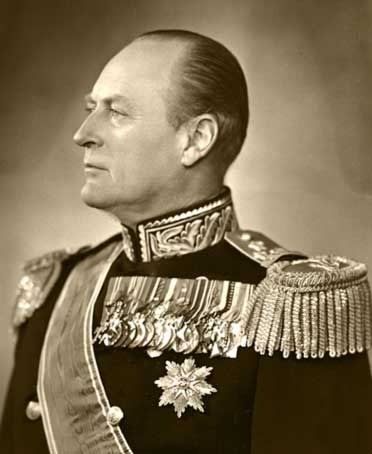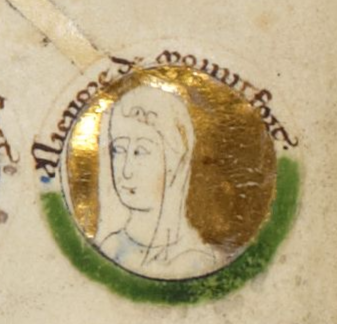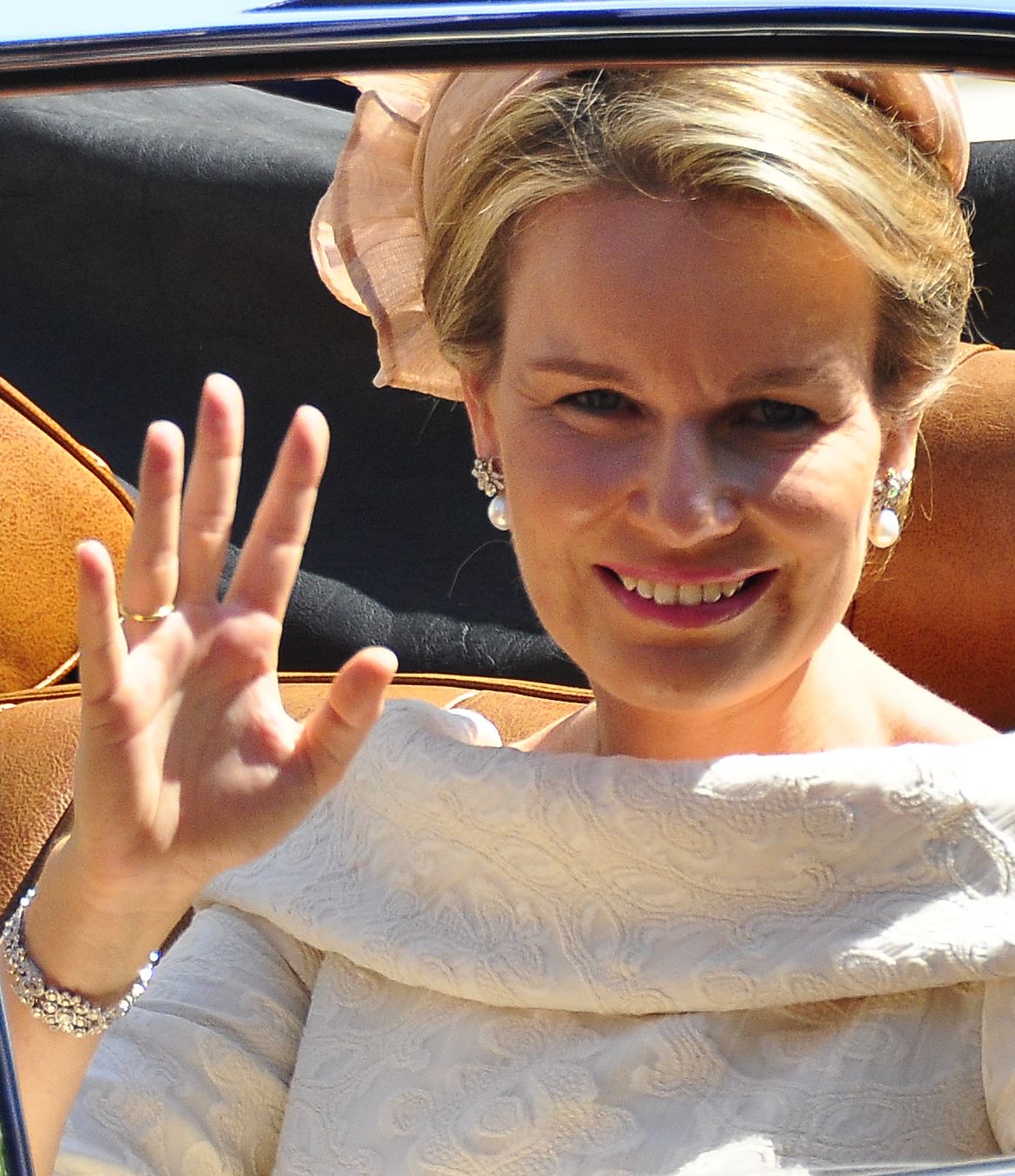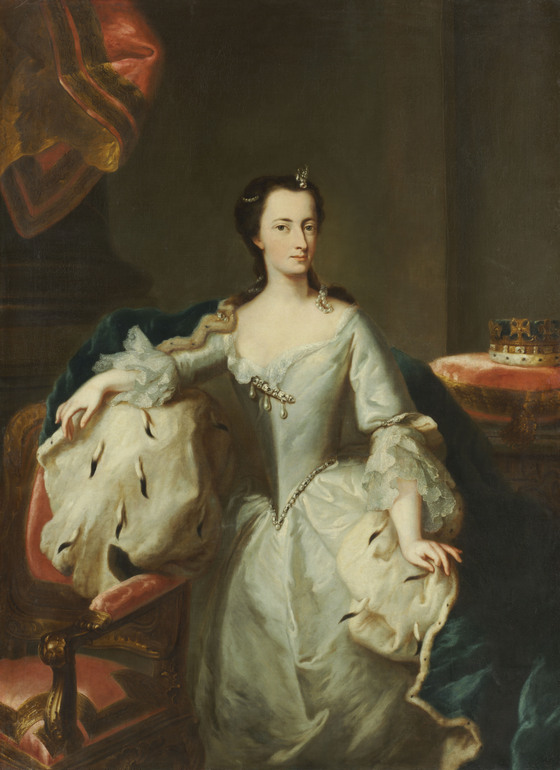© Unofficial Royalty 2024

King Olav V of Norway; Credit; Wikipedia
January 17, 1719 – Death of Sophie Amalie Moth, mistress of King Christian V of Denmark and Norway, at her estate Jomfruens Egede in Fakse on the island of Zealand in Denmark; first buried at the Church of Our Lady in Copenhagen, Denmark, in 1734, Sophia Amalie and her eldest son by King Christian V, Christian Gyldenløve, were reinterred at Saint Peter’s Church in Copenhagen, Denmark
Sophie Amalie was recognized as Christian V’s official mistress and was created Countess of Samsøe. Christian V and Sophie Amalie had six children who were all publicly acknowledged. Following the practice of his grandfather and father, Christian also gave his illegitimate children the surname Gyldenløve which means Golden Love. All the children also had Christian or Christiane among their names in honor of their royal father. The current Danish noble family of the Danneskiold-Samsøe descends from the eldest son of Sophie Amalie and King Christian V. Sophie Amalie and her children were financially secure because of the funds received from King Christian V and the crown treasury. King Christian V was an active participant in the children’s upbringing, education, and marriage negotiations. After the death of King Christian V in 1699, Sophie Amalie left the Danish court and retired to Jomfruens Egede, an estate she had purchased in 1674 in Fakse on the island of Zealand in eastern Denmark. Twenty years later, Sophie Amalie died on January 17, 1719, aged 64.
Unofficial Royalty: Sophie Amalie Moth, Mistress of King Christian V of Denmark and Norway
January 17, 1755 – Birth of Peter I, Grand Duke of Oldenburg in Riesenberg, Kingdom of Prussia now Prabuty, Poland
Full name: Peter Friedrich Ludwig
In 1781, Peter married Friederike of Württemberg, and they had two sons. In 1785, Peter’s uncle, Friedrich August I, Duke of Oldenburg, died and was succeeded by his son Wilhelm. However, Wilhelm was mentally incapacitated, and Peter was appointed Regent. Peter established a new government for the Grand Duchy, introduced general conscription, and established the Oldenburg Infantry Regiment. Upon his cousin’s death in 1823, Peter became the reigning Grand Duke of Oldenburg. Just short of six years after assuming the throne, Peter suffered a stroke and died
Unofficial Royalty: Peter I, Grand Duke of Oldenburg
January 17, 1764 – Birth of Maria Carolina of Savoy, Electoral Princess of Saxony, 1st wife of the future Anton, King of Saxony, at the Royal Palace of Turin in the Kingdom of Sardinia, now in Italy
Full name: Maria Carolina Antonietta Adelaide
The daughter of Vittorio Amadeo III, King of Sardinia, Duke of Savoy and Infanta Maria Antonia Ferdinanda of Spain, Maria Carolina was the first wife of the future Anton, King of Saxony. She married Anton on October 24, 1781. Around December 14, 1782, Maria Carolina became ill with smallpox, and died on December 28, 1782, at the age of 18.
Unofficial Royalty; Maria Carolina of Savoy, Electoral Princess of Saxony
January 17, 1779 – Birth of Maria Cristina of Naples and Sicily, Queen of Sardinia, wife of Carlo Felice, King of Sardinia, at Caserta Palace in the Kingdom of Naples, now in Italy
Maria Cristina was the daughter of Ferdinando IV, King of Naples and Sicily (later Ferdinando I, King of the Two Sicilies) and Maria Carolina of Austria. Her maternal grandmother was Maria Theresa, the sovereign ruler of the Habsburg territories from 1740 until her death in 1780, and was the only female to hold the position. In 1807, Maria Cristina married the future Carlo Felice, King of Sardina but their marriage was childless. In 1821, Carlo Felice’s brother Vittorio Emanuele I was not willing to grant a liberal constitution so he abdicated the throne of Sardinia in favor of Carlo Felice who reigned until his death in 1831. Maria Cristina survived her husband by eighteen years, dying on March 11, 1849, aged 70.
Unofficial Royalty: Maria Cristina of Naples and Sicily, Queen of Sardinia
January 17, 1861 – Death of Lola Montez, mistress of King Ludwig I of Bavaria, in Brooklyn, New York; buried at Green-Wood Cemetery in Brooklyn, New York
Lola Montez was a dancer, courtesan, and mistress of King Ludwig I of Bavaria. She was born Marie Dolores Eliza Rosanna Gilbert on February 17, 1821, in Ireland. Starting in 1842, using the stage name Maria de los Dolores Porrys y Montez, also known as Lola Montez, she pretended to be a Spanish dancer from Seville, Spain. She also accepted favors from wealthy men in return for sex and was widely regarded as a courtesan. Lola became famous for her Spider Dance, which involved her shaking imaginary tarantulas out of her clothes and stamping on them. She then raised her skirt so high that the audience could see that she wore no underwear. In 1846, 25-year-old Lola became the mistress of the 60-year-old King Ludwig I of Bavaria. At the start of the Revolutions of 1848 in the German states, Lola was forced to flee, living in Austria, Switzerland, France, and London, working as an entertainer and lecturer. In 1851, Lola went to the United States where she was surprisingly successful. In 1852, on Broadway, she played herself in a theater revue, Lola Montez in Bavaria. She toured the east coast until 1853 when she went to San Francisco where her performances created a sensation. By 1860, Lola was exhibiting the third-stage effects of syphilis. She died on January 17, 1861, aged 39, in Brooklyn, a borough of New York City.
Unofficial Royalty: Lola Montez, mistress of King Ludwig I of Bavaria
January 17, 1870 – Birth of Maria Luisa of Bourbon-Parma, Princess of Bulgaria, first wife Tsar Ferdinand of Bulgaria, in Rome, Italy
Full name: Maria Luisa Pia Teresa Anna Ferdinanda Francesca Antonietta Margherita Giuseppina Caroline Bianca Lucia Apollonia
Maria Luisa was the eldest child of Robert I, Duke of Parma and his first wife Princess Maria Pia of Bourbon-Two Sicilies. In 1893, she married the reigning Prince Ferdinand of Bulgaria. They had four children including Boris III, Tsar of Bulgaria. Maria Luisa’s marriage, which had been strictly for political and dynastic reasons, was not a happy one. Having given birth to three children, and expecting a fourth within five years had taken a toll on her already frail health. 29-year-old Maria Luisa developed pneumonia while pregnant with her youngest child, and died on January 31, 1899, just a day after giving birth.
Unofficial Royalty: Maria Luisa of Bourbon-Parma, Princess of Bulgaria
January 17, 1882 – Birth of Grand Duchess Elena Vladimirovna of Russia, Princess Nicholas of Greece, daughter of Grand Duke Vladimir Alexandrovich of Russia and wife of Prince Nicholas of Greece, in St. Petersburg, Russia
Elena was the only daughter of Grand Duke Vladimir Alexandrovich of Russia and Marie of Mecklenburg-Schwerin. Through her father, she was the granddaughter of Alexander II, Emperor of All Russia, niece of Alexander III, Emperor of All Russia, and first cousin of Nicholas II, Emperor of All Russia. In 1902, Elena married her second cousin Prince Nicholas of Greece, the son of King George I of Greece and Grand Duchess Olga Konstantinovna of Russia. The couple had three daughters including Princess Marina of Greece who married Prince George, Duke of Kent. Because of the political situation in Greece, members of the Greek royal family, including Elena and her husband, were often in exile. The Greek monarchy was restored in 1935, and the following year, Elena and Nicholas returned to Greece. Having suffered from declining health for several years, Prince Nicholas died in 1938. Elena remained in Greece throughout World War II. Along with her sister-in-law, Princess Andreas of Greece (the former Princess Alice of Battenberg), Elena worked with the Red Cross during World War II to organize shelters and nurses in the poor neighborhoods of Athens. Elena lived out the rest of her life in Greece, enjoying a close relationship with King Paul and Queen Friederike, and a particularly close bond with the future King Constantine II.
Unofficial Royalty: Grand Duchess Elena Vladimirovna of Russia, Princess Nicholas of Greece
January 17, 1905 – Death of Caroline Reuss of Greiz, Grand Duchess of Saxe-Weimar-Eisenach, first wife of Wilhelm Ernst, Grand Duke of Saxe-Weimar-Eisenach, in Meiningen, Duchy of Saxe-Meiningen, now in Thuringia, Germany; buried in the Weimarer Fürstengruft in the Historical Cemetery of Weimar in Grand Duchy of Saxe-Weimar-Eisenach, now in Thuringia, Germany
In 1903, Caroline married Grand Duke Wilhelm Ernst of Saxe-Weimar-Eisenach. The wedding was attended by the groom’s second cousin, Wilhelm II, German Emperor, King of Prussia and his wife Augusta Viktoria, as well as his first cousin, Queen Wilhelmina of the Netherlands and her husband Prince Hendrik. Caroline was against the arranged marriage, and it was only through the insistence of Wilhelm II and his wife Augusta Viktoria that she went through with the ceremony. The couple had no children, and their marriage lasted less than two years. Caroline died on January 17, 1905, at just 20 years old. Officially, the cause of death was pneumonia, but there were many rumors that she died by suicide.
Unofficial Royalty: Caroline Reuss of Greiz, Grand Duchess of Saxe-Weimar-Eisenach
January 17, 1908 – Death of Ferdinando IV, Grand Duke of Tuscany in Salzburg, Austria; buried in the Tuscan Vault at Imperial Crypt in Vienna, Austria
Ferdinando was the son of Leopoldo II, Grand Duke of Tuscany and his second wife Maria Antonia of Bourbon-Two Sicilies. In 1856, Ferdinando married Princess Anna of Saxony, daughter of Johann, King of Saxony. Anna gave birth to a daughter in 1858. However, a year later, Anna miscarried a daughter due to typhoid fever and died four days later. In 1859, the Grand Ducal family was forced to flee Florence because of the wars caused by the Italian unification movement. Leopoldo II abdicated in favor of his son Ferdinand IV who was Grand Duke of Tuscany in name but never really reigned. Ferdinando was unable to return to Florence to claim his throne, and an elected Tuscan National Assembly formally deposed him. The Grand Duchy of Tuscany was annexed to the Kingdom of Sardinia in 1860, as a part of the unification of Italy and in 1861, Vittorio Emanuele II, King of Sardinia was proclaimed the first King of the new, united Kingdom of Italy. Ferdinando spent the rest of his life in exile in the Austrian-Hungarian Empire. In 1868, Ferdinando married Princess Alicia of Bourbon-Parma and the couple had ten children. Ferdinando died at the age of 72.
Unofficial Royalty: Ferdinando IV, Grand Duke of Tuscany
January 17, 1991 – Death of King Olav V of Norway at the Royal Lodge (Kongsseteren) in Holmenkollen, Oslo, Norway; buried at the Akershus Fortress in Oslo, Norway
The son of Prince Carl of Denmark and Princess Maud of the United Kingdom, he assumed the name Olav when his father became King Haakon VII of Norway in 1905. He was the paternal grandson of King Frederik VIII of Denmark and Princess Louise of Sweden, and the maternal grandson of King Edward VII of the United Kingdom and Princess Alexandra of Denmark. An avid skier and sailor, Olav represented Norway in the 1928 Olympic Games, winning a Gold Medal in the sailing competition, and remained active in sailing his whole life. In 1929, Olav married his first cousin Princess Märtha of Sweden. They had three children including the current King of Norway, Harald V. In April 1954, Crown Princess Märtha died of cancer, having been ill for some time. Three years later, Olav became King of Norway, following the death of his father. Olav, already much loved by the Norwegian people, became even more popular during his reign. He was often found among his people – driving around town, stopping in shops, taking the train to the ski slopes unaccompanied – gaining him the nickname “The People’s King”. King Olav V died of a heart attack on January 17, 1991, at the age of 88.
Unofficial Royalty: King Olav V of Norway
This article is the intellectual property of Unofficial Royalty and is NOT TO BE COPIED, EDITED, OR POSTED IN ANY FORM ON ANOTHER WEBSITE under any circumstances. It is permissible to use a link that directs to Unofficial Royalty.






















